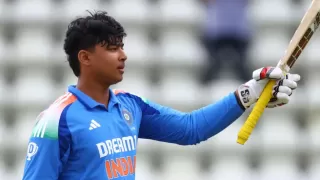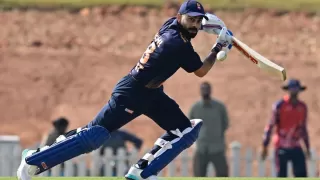Powerplay in Cricket: Understanding the Meaning and Origin of the Rule

Cricket, often referred to as the gentleman's game, has witnessed several rule changes over the years to keep the sport exciting and engaging for players and spectators alike. One such significant rule that revolutionized limited-overs cricket is the Powerplay. In this blog, we will delve into the meaning and origin of the Powerplay rule, exploring its impact on the game and how it has shaped the strategies employed by teams.
What is Powerplay?
In cricket, Powerplay refers to a specific period during a limited-overs match where certain fielding restrictions are imposed on the bowling side. These restrictions are intended to enhance the scoring opportunities for the batting team, encouraging aggressive play and more dynamic contests. Powerplays are usually implemented in One Day Internationals (ODIs) and Twenty20 Internationals (T20Is) but not in traditional Test matches.
Understanding the Powerplay Rules:
-
The Initial Powerplay:
The initial Powerplay, also known as the mandatory Powerplay, occurs at the beginning of the innings. In ODIs, the first ten overs are designated as the initial Powerplay, while in T20Is, it extends to the first six overs. During this period, a maximum of two fielders are allowed outside the 30-yard circle, which means the majority of fielders are positioned in the inner ring, creating gaps for batsmen to exploit.
-
The Middle Powerplay:
The middle Powerplay, also referred to as the optional Powerplay, is taken by the batting team between the 11th and 40th over in ODIs and between the 7th and 16th over in T20Is. In this phase, the batting side can choose to have three fielders placed outside the 30-yard circle. This additional fielder outside the circle allows more protection for the boundary, while still providing opportunities for aggressive strokeplay.
-
The Death Powerplay:
The death Powerplay, unique to ODIs, occurs in the last ten overs of the innings. It allows the batting team to take advantage of the final overs by having a maximum of five fielders outside the 30-yard circle. This period is crucial for teams aiming to maximize their run-scoring potential in the closing stages of the innings.
Origin of the Powerplay Rule:
The concept of Powerplay was introduced by the International Cricket Council (ICC) in an effort to increase the excitement and entertainment value of limited-overs cricket. Before the implementation of Powerplay, fielding restrictions were minimal, leading to cautious and defensive play from the batting side. The introduction of Powerplay aimed to counter this by providing more scoring opportunities and encouraging aggressive tactics from both teams.
The Powerplay rule was first introduced in One Day Internationals during the 2005-06 cricket season. The ICC implemented the rule after extensive discussions and trials, with the objective of boosting the popularity of limited-overs cricket and attracting a wider audience. The positive reception and increased viewer engagement following the introduction of Powerplay resulted in its subsequent adaptation for T20 Internationals as well.
Impact of Powerplay on Cricket:
The introduction of Powerplay has had a profound impact on the game of cricket. It has not only increased the scoring rate but has also changed the dynamics of team strategies. Batting teams now have to carefully plan their approach, deciding when to take the Powerplay and how to utilize the fielding restrictions effectively. Bowlers, on the other hand, face the challenge of adapting their tactics during these periods to contain the opposition's scoring.
The Powerplay has also given rise to various innovative strategies, such as pinch hitters opening the innings or explosive batsmen being held back until the middle or death Powerplay. Captains and coaches spend a significant amount of time strategizing and analyzing the game to maximize the advantage provided by the Powerplay overs.
Conclusion:
The Powerplay rule has undoubtedly transformed the limited-overs format of cricket, making it more exciting and action-packed. By introducing fielding restrictions during specific phases of the game, the ICC has successfully created an environment that favors aggressive play, resulting in higher run-scoring and close contests. The Powerplay continues to play a significant role in the tactical and strategic aspects of the game, forcing teams to adapt and innovate to gain an upper hand.
As cricket evolves, it is possible that further modifications and refinements to the Powerplay rule may occur, but its essence as a catalyst for attacking cricket is likely to remain. The Powerplay, with its dynamic nature and impact on team strategies, stands as a testament to the ever-changing face of cricket and its relentless pursuit of thrilling entertainment.











Give Your Feedback